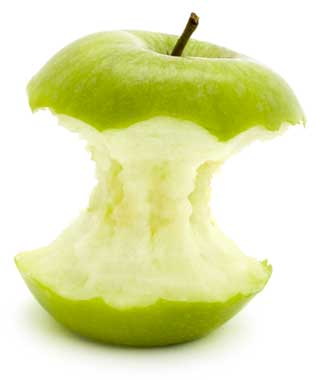Have you ever watched a nasty cold or flu spread like wildfire? You’ve witnessed the force of a contagion. Yet, even that flu is not as contagious as the world’s number-one infectious disease—tooth decay! That’s right, tooth decay, followed closely by gum disease, are the most prevalent infectious diseases in the world today.Most likely you know that tooth decay is caused by bacteria. When these bacteria are in the mouth, they stick to the tooth surface in a plaque layer. These bacteria feed upon sugars in the food we eat. As a by-product of their life processes, the bacteria then release acids onto the tooth surface. These acids eat into and dissolve the tooth enamel, and that is what forms the cavity.
The acids produced by the bacteria, then, are waste products. So if your household has any youngsters who balk at doing a thorough brushing, just tell them that not brushing means they’ll have to go around with ‘bacteria poo’ in their mouths!
How does bacteria get into the mouth?
As adults, we tend to accept the fact that our mouths harbor bacteria. If we’ve developed good habits of oral hygiene, we’re most likely keeping the bacteria levels at bay. But did you wonder how they get there in the first place?
Babies are born with nearly sterile, or at least low-bacteria, mouths. This means bacteria have to be introduced into a child’s mouth from his or her environment. Often it comes, inadvertently, from the parents or other caregivers. Sharing eating utensils or drinking cups, for example, is a great way to spread decay-causing bacteria. As it’s usually mum who spends the most time with a newborn it is often her bacteria passed down the ‘family tree’—so if mum has good teeth its likely baby will too.
The next step toward decay is feeding the little microbes. And just as we love sugar, so do bacteria! While sugar is present in nearly everything we eat, foods such as cookies, candy, and soft drinks, really send the bacteria into a feeding (and acid-producing) frenzy. Sugary foods that are eaten frequently or that stay in the mouth a long time, such as hard candies, just give the bacteria that much more time to feed, build up their colonies, and produce tooth-dissolving acids.
What can we do to prevent tooth decay—especially for the kids?
Tooth decay is hard on children. Even though it’s preventable in many cases, tooth decay is still five more times common than asthma in young children.
It is also the second most common cause of absenteeism from school. Take these steps to help your child’s smile stay in top form:
- Once the first tooth appears, begin brushing daily with a low fluoride toothpaste morning and night.
- Does your child like to fall asleep with a bottle or sippy cup at bedtime? Fill it with water only—avoid fruit juice or other sugary drinks.
- First tooth in? That’s a time for celebration—and baby’s first visit to the dentist!
- When the back teeth have arrived start flossing once a day.
- Change toothbrushes regularly.
- Don’t spread the germs that cause tooth decay. Avoid sharing spoons, cups, food, or pacifiers. And of course, don’t share a toothbrush!
Because preventing tooth decay is a lifelong proposition, these pointers apply equally well to adults—well, maybe except for falling asleep with a sippy cup. Daily flossing and brushing with a fluoride toothpaste, avoiding or cutting down on sugary food and drink, and regular check-ups all work together to keep your teeth strong, beautiful and free of cavities. If that’s not enough incentive, consider this: cutting out the sugar is good for your waistline, too!


